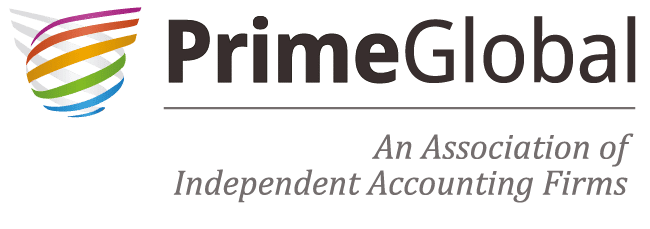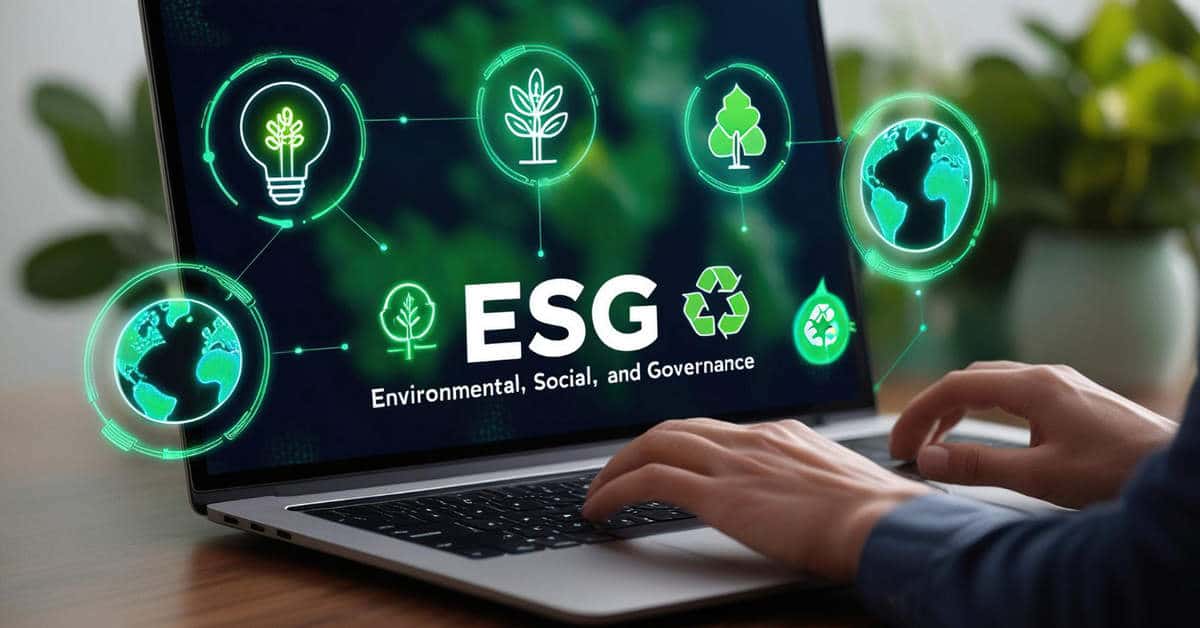Sustainability Reporting: Evolution, Impact, and Future

Sustainability Reporting: Evolution, Impact, and Future
Impact of ESG Considerations: Understanding Evolution, Global Trends and the Latest Developments
- Last Updated
In the past decade, sustainability reporting has changed across the globe from being voluntary requirement to regulatory expectation. The momentum which started in 2014 with the European Union’s Non-Financial Reporting Directive (NFRD) picked pace globally through the use of frameworks like TCFD, GRI, and SASB. Between 2021 and 2023, many nations, including the UK, India, Japan, and members of the EU made ESG reporting mandatory through mechanisms like BRSR and CSRD.
In 2023, the International Sustainability Standards Board (ISSB) introduced global baseline standards, IFRS S1 and S2, driving convergence. Nations including the US, Australia, and Singapore have started aligning their sustainability reporting regimes with these standards, transitioning to more consistent, credible, and enforceable ESG disclosures.
Relevance of Sustainability Reporting
Sustainability reporting becomes important to provide a holistic view of the company’s standing in terms of operational ability and sustainability. With growing comprehension of sustainability considerations to channelling investment, investors no longer view the company’s performance in isolation. Instead, they looking at the company’s business model and past performance. This shift in evaluating both the company’s financial and non-financial performance can no longer be captured just in the annual report.
To bridge this gap, the concept of materiality serves as a good foundation. Traditionally businesses focused on financial materiality issues that were important to investors. However, the double materiality approach enabled companies measure both inward and outward impact of their activities, i.e. how ESG issues affect business, and how business affects people and the planet. This approach to ESG reporting helps companies highlight most important sustainability issues for both their operations and the world around them.
Sustainability reports, enabled by sustainability reporting standards, are a strategic tool for businesses to be aware of activities related to sustainability and make critical decisions. ESG considerations have now become an important aspect while taking all the key decisions, along with financial analysis.
Impact of ESG Considerations on Business Decision-Making
A comprehensive sustainability reporting is relevant for providing transparent and data-driven insights on the company’s ESG performance. A transition, triggered by the shifting focus on sustainability is enabling efficient business decision making in several ways.
Mergers and Acquisitions (M&A) Decisions
Due diligence related to ESG aspects is critical part for investment and M&A decision. Evaluation of a company based on its ESG performance helps identify potential risks, provides clarity over environmental liabilities, regulatory compliance issues, and social challenges, which may affect valuation and deal terms.
For instance, companies with strong ESG credentials can easily attract better opportunities related to innovation and competitive edge post-acquisition.
Procurement Decisions
Earlier, procurement decisions were based only on price and quality. However, integration of sustainability into business strategy has resulted in changes. It includes supplier selection based on ESG factors, such as suppliers’ environmental performance, labor standards, and governance practices. This transition helps companies restrict supply chain disruptions, regulatory penalties, and reputational damage.
Financing Decision
In the recent past, there has been an increase in green bonds, loans linked to sustainability, and ESG-focused investment funds. This clearly shows that investors and lenders are now leaning towards responsible business practices. By using ESG factors for credit risk assessments and investor reporting, companies can secure good financing terms and build trust with capital providers.
Strategy Decisions
Integrating ESG risks and opportunities has significantly improved company’s financial decision making. Factors like climate change scenarios, regulatory shifts, and changing consumer preferences provide greater clarity and strong business rationale. Sustainability goals and strategic objectives can be combined by companies to achieve resource efficiency, quality innovation, and work towards competitive advantage in the sustainability-conscious marketplace.
Costing Decisions
Driven by the clarity provided by sustainability reporting frameworks, companies are now taking into consideration the sustainability impact for making financial decisions. The life-cycle costs of products and operations, including environmental and social externalities, are being accounted to arrive at more accurate and responsible cost structures. Factors such as waste management, carbon emissions, energy consumption, and social impact ensures pricing reflects true resource use and risk exposure. This way companies can invest in cleaner technologies and process enhancements to drive operational cost reduction.
Traditional Decision-Making and Its Impact on Sustainability
Globally, companies are committing to ambitious sustainability targets like achieving Net Zero carbon emissions, advancing circular economy principles, and adopting and meeting the United Nations Sustainable Development Goals (SDGs). Thus, the alignment of financial decisions with these goals becomes important. These commitments require integrated planning across all business functions. However, these goals can be seriously undermined if there is no alignment between financial decision-making and sustainability considerations.
Investment Decisions
Without evaluating carbon footprint and regulatory risks, companies planning to channel investments towards high-emission assets or projects, may end up jeopardizing long-term viability and regulatory compliance. One such example is that of UBS. It pushed its target to achieve net-zero greenhouse gas (GHG) emissions in its operations by 10 years to 2035, from its prior 2025 goal, attributing the change largely to the bank’s acquisition of Credit Suisse.
Procurement Decisions
If procurement decisions drop supplier sustainability criteria, it may cause reputational damage or supply chain disruptions. In 2010, Apple faced intense scrutiny over labor conditions at some of its major suppliers, Foxconn and Pegatron, where iPhones and other devices were manufactured.
Financing Decision
Sustainability oversight during capital allocation ensures greater focus on innovation in low-carbon technologies or sustainable business models. Companies that overlook sustainability considerations may end up diverting resources towards traditional, legacy systems that are incompatible with future regulations or market expectations.
It can delay the company’s progress to achieve sustainability goals, weaken investor confidence, and restrict access to the emerging green finance instruments.
Hence, financial decisions should align with sustainability strategies for complete overview. Additionally, climate risks and sustainability objectives should be integrated into capital budgeting, risk management, and performance measurement frameworks.
For M&A, procurement, financing, costing, and strategy, ESG aspects continue to define how companies assess risks, bring in capital, and build long-term resilience. Transparent ESG reporting will increase access to green finance, support innovation, and enhance stakeholder trust. Also, sustainability reporting allows companies to showcase accountability, and contribute towards global sustainability goals. It acts as a powerful tool for companies to assess sustainability-related risks and opportunities.
Global Trends in Sustainability Reporting
Several global ESG reporting frameworks have been developed over the course of time across jurisdictions, enabling global comparability of sustainability disclosures.
- The newly developed IFRS Sustainability Disclosure Standards (IFRS S1 and S2) account for how ESG factors can influence company value and encourage alignment with financial reporting.
- The EU’s Corporate Sustainability Reporting Directive (CSRD) encourages a double materiality lens to link financial impacts of ESG risks and a company’s broader ESG impacts.
- The TCFD framework helps companies disclose financial risks and opportunities posed by climate change.
- The SASB framework includes industry-specific guidance on financially material ESG issues.
- India’s BRSR Core (subset of sustainability reporting in India) introduces KPIs that tie ESG performance to business outcomes.
Choosing the right ESG reporting framework can help companies communicate their long-term value, enhance transparency, and meet the evolving expectations of investors and regulators in the sustainability era. To understand sustainability reporting standards, you can read the blog on sustainability reporting by clicking here.
| Country / Region | Framework(s) | Status (Mandatory/Voluntary) |
|---|---|---|
| European Union | Corporate Sustainability Reporting Directive (CSRD) (ESRS) | Mandatory (phased since 2024) |
| United States | SEC climate rule (TCFD-based) | Mandatory (implementation stayed, contested) |
| India | BRSR / BRSR Core | Mandatory |
| Japan | TCFD-aligned → IFRS-based | Mandatory for prime market firms |
| Singapore | SGX Guidelines, IFRS Roadmap | Mandatory (sectoral → full in FY 2025) |
| Canada | CSDS proposals (TCFD/ISSB alignment) | Proposed and currently paused |
| Australia | Australian sustainability reporting standard (ASRS/AASB S2) | Mandatory from Jan 2025, phased for large listed and financial entities |
| China | CSDS (ISSB/CSRD-aligned) | Voluntary → mandatory by ~2030 |
A trend of strong global convergence toward ISSB sustainability reporting standards is seen. Many jurisdictions are aligning or transitioning their national ESG reporting frameworks such as ASRS in Australia, CSDS in Canada, and SLFRS in Sri Lanka with newly developed ISSB’s IFRS S1 and S2 standards. In several countries, the government (Asia-Pacific, North America, Latin America, and the EU) has made ESG reporting following sustainability reporting standards mandatory for businesses in response to the increased pressure from investors and regulators for consistency and transparency.
Countries like Canada, Brazil, Indonesia, and South Korea are currently in transition, while others like Sri Lanka and Pakistan have announced new mandatory sustainability reporting frameworks that is set to roll out in 2025 and beyond.
Latest Developments in Sustainability Reporting
Greater Adoption of Assurance Requirements
Third-party assurance of ESG disclosures has now become the norm. Companies are voluntarily doing assurance of their sustainability disclosures to boost reporting credibility. In the EU, through CSRD, limited assurance has been mandated, beginning in 2024, with a roadmap toward reasonable assurance in the future. In India, on similar lines, BRSR Core mandates (applicable to the top 1,000 listed companies) external assurance on select ESG indicators, thereby aligning non-financial reporting with financial audit standards. Leading companies like Unilever and Nestlé are institutionalizing assurance-ready data processes to enhance credibility.
The Integration of AI and Digital Platforms in ESG Reporting
Technology, artificial intelligence and digital platforms has made tracking real-time data collection, automated materiality assessments, and regulatory compliance faster. It helps in reducing manual efforts in the preparing sustainability reports. This also ensures smooth data collection, improved accuracy, traceability, auditability, and simplifies ESG reporting by supporting it with timely, structured, and verifiable data.
Scope Expansion to Value Chain (Scope 3) Disclosures
Amid growing regulatory and stakeholders’ pressure, an increasing number of companies are reporting the ESG performance of its value chain. It follows the EU’s Corporate Sustainability Due Diligence Directive (CSDDD) that requires companies to assess and mitigate environmental and human rights risks across upstream and downstream operations.
Brands like Apple and IKEA responded by revealing their tier-1 and tier-2 supplier practices. They published supplier codes of conduct that help in reporting non-compliance incidents. Companies in India are encouraged to track supply chain emissions and local sourcing in their BRSR reports.
These developments expand the scope of ESG reporting to include Scope 3 emissions, labor rights, and biodiversity risks that are part of global supply chains.
Scrutiny of Greenwashing and Misleading Disclosures
One of the major concerns with sustainability reporting is the risk of greenwashing which requires authorities to take action. In the United States, BNY Mellon was fined $19 million by the SEC for overstating its ESG fund credentials. Meanwhile, consumer brand like H&M recently faced legal action for unsubstantiated marketing practices like ‘Conscious Collection’.
Stricter rules in place
In the UK, the Financial Conduct Authority (FCA) introduced the Sustainable Disclosure Requirement (SDR) to standardize sustainability claims in financial products. In 2024, India issued strict guidelines under the Consumer Protection Act to tackle greenwashing. This was done to stop companies from using blanket terms like “eco-friendly” or “sustainable” unless they have proofs to support the claim. Additionally, businesses should make sure that product related information and evidences are easily accessible through QR codes, websites, or product labels.
Climate and Nature-related Risks
Climate and nature-related risk reporting are now becoming primary requirements. Companies are required to report on broader environmental concerns like biodiversity loss, water stress, and ecosystem damage and not just on emissions.
Frameworks like TCFD and TNFD help companies understand the risks of climate issues on their operations, and evaluate the company’s impact on nature. As major economies are already aligning to these standards, better understanding of business resilience and planet health is expected in the future.
Digitalization and XBRL Tagging
Sustainability reports are being digitally transformed into machine-readable disclosures. With the introduction of XBRL (eXtensible Business Reporting Language) tagging, ESG metrics are made accessible and comparable. This allows regulators, investors, and analysts to process large volumes of sustainability data efficiently. Countries like Japan and South Korea are also piloting XBRL-based ESG disclosures. India has already embedded XBRL-enabled sustainability reporting into its regulatory framework since FY 2022–23. This initiative is now boosting transparency but also driving real-time analysis and data quality improvements as the framework evolves.
Future of Sustainability Reporting
Rising expectations around sustainability reporting is shaping how companies disclose their information to stakeholders. Amid tight regulations and stakeholder for transparency, companies need to go beyond basic disclosures or generic commitments. The companies need to invest sincerely on ESG reporting and should not treat as a tick box requirement.
Moving forward, regulators can expect companies to disclose granular data while investors will be scrutinizing the disclosures made by companies. On the consumer end, brands will be expected to show real and measurable impact of their business.
Companies need to develop their sustainability reporting capabilities and start training their internal team. This will not only be restricted to reporting but also accounting ESG aspects across decision-making across procurement, finance, operations, and innovation pipelines. Companies need to take a proactive stance instead of reactive compliance.
Authored by:
Aishwarya Nandedkar | Sustainability & ESG
FAQ
ESG reporting involves disclosing the company’s environmental, social, and governance performance, providing investors and lenders with a holistic understanding of the company’s impact beyond financial metrices, towards broader sustainability goals.
ESG reporting has evolved to become more structured and convergent, providing transparent, data-driven insights into a company’s ESG performance. It follows the seven principles of sustainability reporting and companies can create ESG report that not only meet compliance requirement but also drives clarity to decision-making, build trust with stakeholders, and guide future sustainability.
- Materiality
- Stakeholder inclusiveness
- Accuracy
- Clarity
- Comparability
- Timeliness
- Reliability
The shift towards sustainability and increasing demand from the investors/lenders have influenced companies to integrate ESG considerations into business decision-making. Sustainability disclosures influence various business decisions including:
- Merger and Acquisition: ESG reporting helps with accessing risks and opportunities.
- Procurement: Enabling supplier selection based on ESG criteria and therefore avoiding risks of supply chain disruption.
- Financing: Attracting investors and guiding with fund allocations.
- Strategy: Aligning business goals with sustainability objectives.
The double materiality approach considers how ESG factors influence a company’s financial performance (outside-in) and how the company’s activities impact the broader environment and society (inside-out).
Assurance involves independent verification of ESG disclosure, ensures completeness and credibility of ESG reporting. Types include:
Limited assurance: Provides moderate level of confidence
Reasonable assurance: Offers higher level of validation
There is a strong growth in demand for external assurance for sustainability reporting. It helps companies build trust and attract investors.
Share
Share








































































